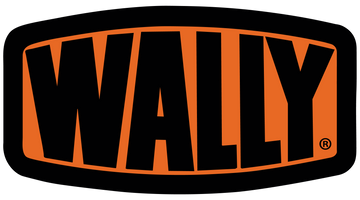From an early age you protect the things you care about with padlocks , but you don't know anything about the tool you use. A padlock is a precision object with mechanisms (sometimes really small!) capable of closing the device and guaranteeing a certain degree of security. But how can you choose the most suitable tool? Let's start with knowing its anatomy.
The main parts of the lock
A padlock has some main parts, quite transversal to the different types, which guarantee the closure to anyone who doesn't have the keys. The components that make up a padlock are:
- Body
- Bow
- Snaps
- Protection barrel and plate
- Pistons, counter-pistons and springs
The body
The body is the main part of the padlock which varies according to the uses we will make of it. The main types are:
- Standard body
- Rectangular body
- Bell-shaped body
A square shape makes burglary easier because it offers a better grip to common break-in tools. The best padlocks, in fact, have shapes and corners that are as rounded as possible.
In addition to the shape, the material of the body is important because it must be resistant to cuts, tears and blows. These characteristics make a padlock secure and the most common materials are brass and steel. The latter, hardened and case hardened, is one of the best materials for a quality padlock.
The safest padlocks are armored with steel, i.e. an armor is created around the padlock which increases its resistance.
The bow
The shackle or rod is the part that closes the padlock and is the most sensitive to break-ins. The grooves where the latch (or latches) will be inserted are always visible on the arch.
As with the body, the shape and materials are essential for proper safety. The top material for this element is hardened steel which is very resistant to burglary. For the shape it is now standard to use the cylindrical one to reduce the grips.
Snaps
The latch is the component that adheres to the rod and technically closes the padlock. This element is activated by turning the key in the lock. Padlocks with better security have double latches: the rod will have two notches instead of one.
Protection barrel and plate
The barrel is the element that triggers the latch when the key is turned. The protective plate is located at the bottom of the barrel and prevents you from directly reaching the opening mechanism via the underwire.
Pistons, counter-pistons and springs
The number is essential to avoid dexterity openings, i.e. those made with a lock pick. Why?
The pins are the part to be released to allow the rotation of the key and the opening of the padlock. This system works thanks to a spring mechanism which is activated by the key when inserted. The pistons click when they are at the right height and are released. The height is dictated by the teeth of the key which will be free to move when it has released all the pins. When we remove the key, the pistons are brought back into position by the springs to prevent the key from turning.
Why it is important to know the parts of the lock
Knowing the parts of a padlock allows you to choose the right value for money when buying. Is an armored body needed to protect your lock or not? Which is better steel or brass? And the double latch?
Now you will surely have a few more elements to choose your padlock and to understand the quality of the products that Wally can offer you .

